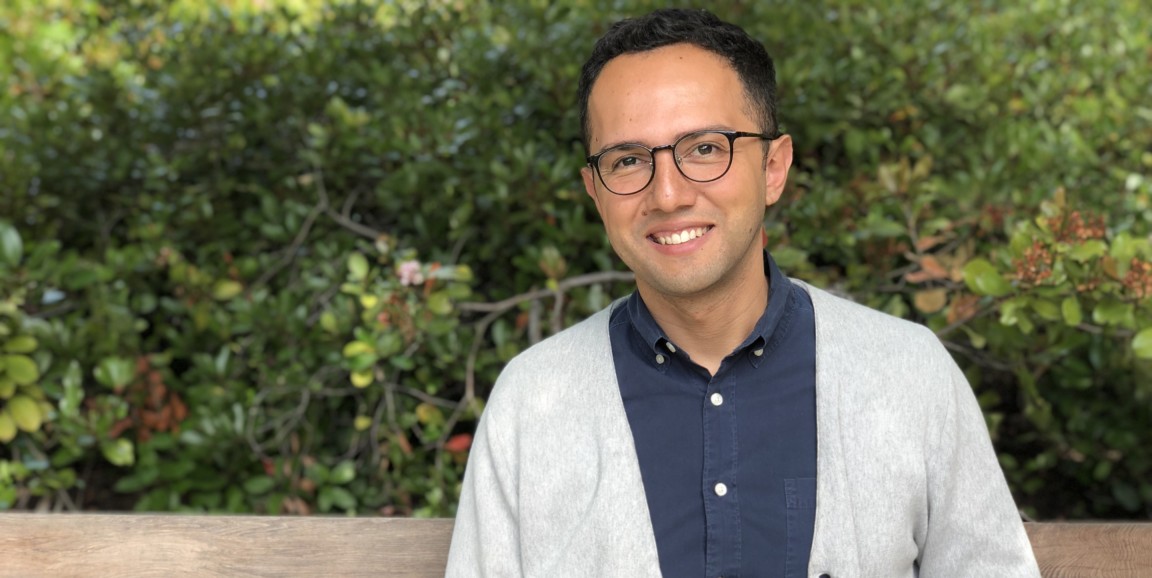A best friend, an eye-opening trip to China and a passion for knowledge put Ahmed El Kaffas, PhD, on the road to Stanford, where he's developing new imaging technology to diagnose and treat cancer. I caught up with El Kaffas, a radiology instructor and father of two, recently.
I was born in Alexandria, Egypt, and we emigrated to Montreal when I was about 3 years old. Then we moved to Toronto when was 15, and I spent another 15 years there until I came to Stanford in 2015.
Definitely not. I grew up playing in punk bands and playing the guitar. The arts were always a big thing for me -- drawing, painting, just doing creative work.
But between grade 12 and grade 13, I became best friends with this guy, and he and I would talk a lot about philosophy and science. We'd go to the library and go through the math aisle and we'd talk about silly things, like how all these textbooks contained a completely different mysterious language that captivated my imagination. It opened my mind to the beauty of science and math and physics, and the need for creative thinking within STEM.
At the end of my fourth year of undergraduate studies, I started talking to a lot of research professors about graduate studies. I became interested in that after an eye-opening trip to China.
I got an opportunity to work in a biomedical lab as a research assistant for a year. I liked the idea of combining biology with physics and engineering and trying to bridge all the gaps between several sciences.
After that, I completed a masters in physics with a focus on biomedical physics, specifically looking at the physics of cells. I started getting interested in the physics of imaging modalities and built an expertise in ultrasound.
After my junior year of college, in 2004, I took an empty backpack and backpacked across the country for four months. I had such a basic life. It really changed how I looked at the world when I came back. I didn't want to do the 9-5 thing. Graduate studies was the first thing that came to mind. I'm driven by the pursuit of knowledge and innovative or creative thinking.
I'm currently reading Hay Ibn Yaqza, a philosophical novel written in the 12th century about a boy who spontaneously starts life on a deserted island.
I'm really interested in the use of ultrasound in cancer for both therapeutic purposes as well as imaging.
From the imaging side, I'm interested in developing new approaches and methods to characterize cancers and liver disease, to help clinicians make better decisions about how to treat and manage patients.
From the therapeutic side, I'm interested in using ultrasound to enhance current cancer therapies like radiation therapy -- so using the sound waves to enhance how cancer cells and the blood vessels in tumors respond to these treatments.
It's a really cheap technology compared to MRI and CT, there's no radiation and you can carry it in your pocket and do quite a bit with it. There are a lot of scans that are done with CT that could be done with ultrasound with the right skill set.
Right now I'm in the middle of the whole process of academia, but I'm also a co-founder of a start-up. We're aiming to take cheaper ultrasound systems and put in artificial intelligence to detect liver cancer on a low-cost basis. The hardware is very cheap, but you can only use these systems for a few very specific applications. The image quality is no good for radiologists and you wouldn't use them to diagnose cancer or find something subtle in the liver or kidneys.
Photo by Daphne Sashin




